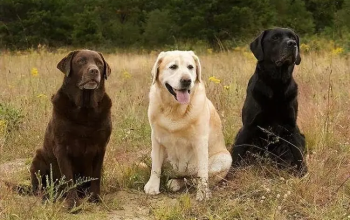
Mammalian pets are a very important category in the pet family, and they are loved by many pet lovers for their diverse forms, unique habits and close interaction with humans.
I. Common types of mammalian pets
- Canines **Canines
- Characteristics: Canines are one of the most loyal friends of humans, and they are highly social and obedient. Different breeds of dogs vary greatly in size, character and function. For example, small dogs such as Pomeranians and Chihuahuas are small and delicate, suitable for keeping in urban flats, they are usually lively and active, with a strong dependence on their masters; medium-sized dogs such as Border Collies and Shiba Inu are both intelligent and energetic; Border Collies are famous for their extremely high IQ and excellent shepherding ability, while Shiba Inu are loved by people for their unique pack of expressions and stubborn yet lovable character; large dogs such as Golden Retrievers, Large dogs such as the Golden Retriever, German Shepherd, etc., often have a strong power and gentle character, the Golden Hair is a famous ‘warm man’, friendly to people, especially suitable for accompanying the elderly and children, the German Shepherd is often used as a police dog, military dogs and other working dogs, its loyalty, bravery and strong executive power is praised.
- Keeping Points: Dogs need regular exercise and training to maintain good health and good behaviour. They need adequate socialisation to avoid behavioural problems. Diet should be based on the dog’s age, weight and activity level, etc. Choose the right dog food and take care to provide plenty of clean water. At the same time, take your dog to the vet regularly for medical check-ups, vaccinations and deworming.
- Cats
- Features: Cats attract many fans with their elegant and independent character. They are agile and lithe, and can often perform adorable acts that are too cute to resist. Like Siamese cats, known as the ‘dog in the cat’, they are lively and active character, very loyal to the owner, and very smart, can interact with the owner to a certain extent; Muppet cats have a beautiful appearance and gentle character, their hair is soft and fluffy, blue eyes such as jewels, giving a noble feeling, Muppet cats are friendly and like to get close to people, and can give a good impression to the people. likes to be close to people and can bring warm company; while the British Shorthair cat is known for its round face and sturdy body, gentle character, strong adaptability, not picky about food, and is a relatively easy breed to keep.
- Keeping Points: Cats need to be provided with a clean and comfortable living environment, including litter tray and cat nest. Their food requirements are relatively high, and they need to choose high-quality cat food, while some canned cat food and snacks can be given appropriately as supplements. Cats are relatively clean and will clean their bodies on their own, but owners also need to groom them regularly to reduce the formation of hairballs. It is important to pay attention to deworming and vaccinating cats regularly, as well as paying attention to their oral health and urinary health.
- RABBITSRABBITS **RABBITS
- Characteristics: Rabbits are usually loved for their cute appearance and docile character. They come in a variety of breeds, such as Dutch rabbits, drop-eared rabbits and pygmy rabbits. Dutch rabbits are small in size, with rich fur colours and a lively and active character. Pendant-eared rabbits are unique because of their long drooping ears, which look very cute and have a relatively docile character; pygmy rabbits, on the other hand, are one of the smallest rabbit breeds in the world, which are small and adorable, and require a relatively small space for keeping. They are small and cute, and require relatively little space to keep. Rabbits are light and love to jump and explore, bringing much joy to people.
- Keeping Points: Rabbits’ diet is based on hay, such as timothy grass and alfalfa grass, while rabbit food and fresh vegetables and fruits can be fed in moderation. They need a large space to move around. It is best to provide a specialised rabbit cage and allow the rabbits to move around in a safe environment on a regular basis. Care should be taken to keep the rabbit cage clean and hygienic by changing the bedding and washing the food bowl and water bottle regularly. Rabbits have fast growing teeth and need to be provided with some teething items such as teething sticks, wooden blocks, etc. to prevent overgrowth of teeth leading to health problems.
- HamsterHamster **Hamster
- Characteristics: Hamsters are small in size and cute in appearance, making them popular small mammal pets. Common hamster varieties include the three-line hamster, pudding hamster, and silver fox hamster. They are active and love to run around in their cages and explore various toys and facilities. Hamsters have strong adaptability, are relatively simple to keep, do not take up much space, and are very suitable for people with limited living space.
- Keeping Points: The hamster’s diet mainly consists of hamster food, grains, nuts, dried fruits, etc. Care should be taken to avoid feeding too much food with high water content, which may lead to diarrhoea. They need a suitable cage equipped with basic facilities such as a food bowl, water bottle, running wheel, and a small nest. Hamsters are nocturnal and usually sleep during the day and are more active at night. The cage should be cleaned regularly to keep the environment dry and clean to prevent diseases.
- Totoro
- Characteristics: Formerly known as hairy silkies, chinchillas look very cute with their fluffy bodies, big ears and black bean-like eyes. Chinchillas are docile and curious, but they are also timid and need some time to adapt to new environments and owners. They are agile and like to jump and climb, which makes them somewhat entertaining.
- Keeping Points: Chinchillas are herbivores, feeding mainly on alfalfa grass, timothy grass and special food for chinchillas. They are sensitive to temperature and humidity and are suitable to live in an environment with a temperature of 15 – 25°C and humidity of 40% – 60%. Chinchillas need a larger multi-layer metal or wooden cage with enough space for them to move and play, and should be equipped with facilities such as a jumping board, a wooden house, a food bowl, a kettle, and a bath sand basin. The chinchillas will bathe themselves with bath sand to keep their bodies clean. The chinchillas should be dewormed and have their teeth and health checked regularly.
II. Benefits of keeping nursing pets
- Companionship and emotional support
- Mammalian pets can give unconditional love and companionship to their owners. When people are lonely, stressed or in a bad mood, they will silently keep by their side and provide comfort in their own way. For example, when you come home after a busy day, your dog will greet you excitedly and your cat will rub up against you. This warm interaction can make you forget the tiredness and worries of the day and feel the happiness of being needed and loved.
- Cultivating a sense of responsibility
- Keeping mammal pets involves taking responsibility for their care, including feeding, drinking, cleaning and health care. This helps develop a sense of responsibility and patience in owners, and allows people to learn to care for and look after others. Through taking care of pets, people can better understand the meaning and value of life, and know how to respect and cherish life.
- Promoting physical and mental health
- Interacting with pets can lower one’s stress level and promote the body’s secretion of some beneficial hormones, such as endorphins, which make people feel relaxed and happy. Studies have shown that people who own pets tend to have better mental health and are less likely to experience problems such as anxiety and depression. Also, some pets such as dogs need to go out for regular walks and exercise, which encourages owners to increase their exercise, which is good for their health.
- Increased socialisation opportunities
- Pets can be a bridge for people to socialise. When taking pets out for walks, attending pet activities or going to the vet, owners have the opportunity to meet other pet lovers, exchange pet-keeping experience and expand their social circle. Pets can also help people break down the barriers between strangers, making it easier to communicate and interact.
III. Notes on keeping nursing pets
- **Providing a suitable living environment
- Different mammal pets have different requirements on their living environment. It is important to provide them with a clean, comfortable and safe living space and maintain suitable temperature, humidity and ventilation. According to the habits and preferences of pets, arrange suitable nests, toys, food and water bowls and other facilities so that pets can feel the warmth and comfort of home.
- Reasonable diet and nutritional balance
- Understand your pet’s dietary needs, provide food that suits them and ensure balanced nutrition. Pets of different species, ages and health conditions require different types, amounts and nutrients of food. It is important to choose quality pet food, pay attention to the freshness and hygiene of the food, and avoid feeding expired, spoiled or unsuitable food to your pet. At the same time, the amount of diet should be reasonably controlled according to the pet’s weight and activity level to prevent obesity or malnutrition.
- Regular Health Checks and Epidemic Protection
- Take your pet to the vet for regular health checkups, including physical examination, vaccination and deworming. This helps to detect health problems of your pet in time and take appropriate treatment measures to prevent the occurrence and spread of diseases. It is important to follow the veterinarian’s advice and formulate a reasonable vaccination plan for your pet to ensure its health and safety.
- Concern about the behavioural and psychological needs of pets
- Mammalian pets are rich in emotional and behavioural expressions. Owners should pay attention to their behavioural changes and understand their needs and emotions. Give pets enough attention, companionship and playtime to meet their social and recreational needs. For some behavioural problems, it is necessary to discover them in time and take the right approach to correct and guide them, so as to avoid pets from developing bad habits.
- Safety Protection and Awareness of Responsibilities
- In the process of keeping pets, ensure the safety of pets and others. Avoid pets coming into contact with dangerous objects, such as poisonous plants, chemicals, sharp objects, etc. Use proper leashes when going out to prevent pets from getting lost or having accidents. At the same time, respect the feelings and rights of others, comply with relevant laws and regulations and community rules, and be civilised in pet ownership.
In conclusion, mammalian pets bring a lot of joy and warmth to our lives, but keeping them also requires us to give time, energy and love. Only by giving them enough love and care can we build a deep bond with these cute little creatures and enjoy a good time together. We hope that every pet owner can take care of their pets with all their heart so that they can grow up in a healthy and happy environment.
(Some images and content are from the internet, please contact us to remove any infringement!)

